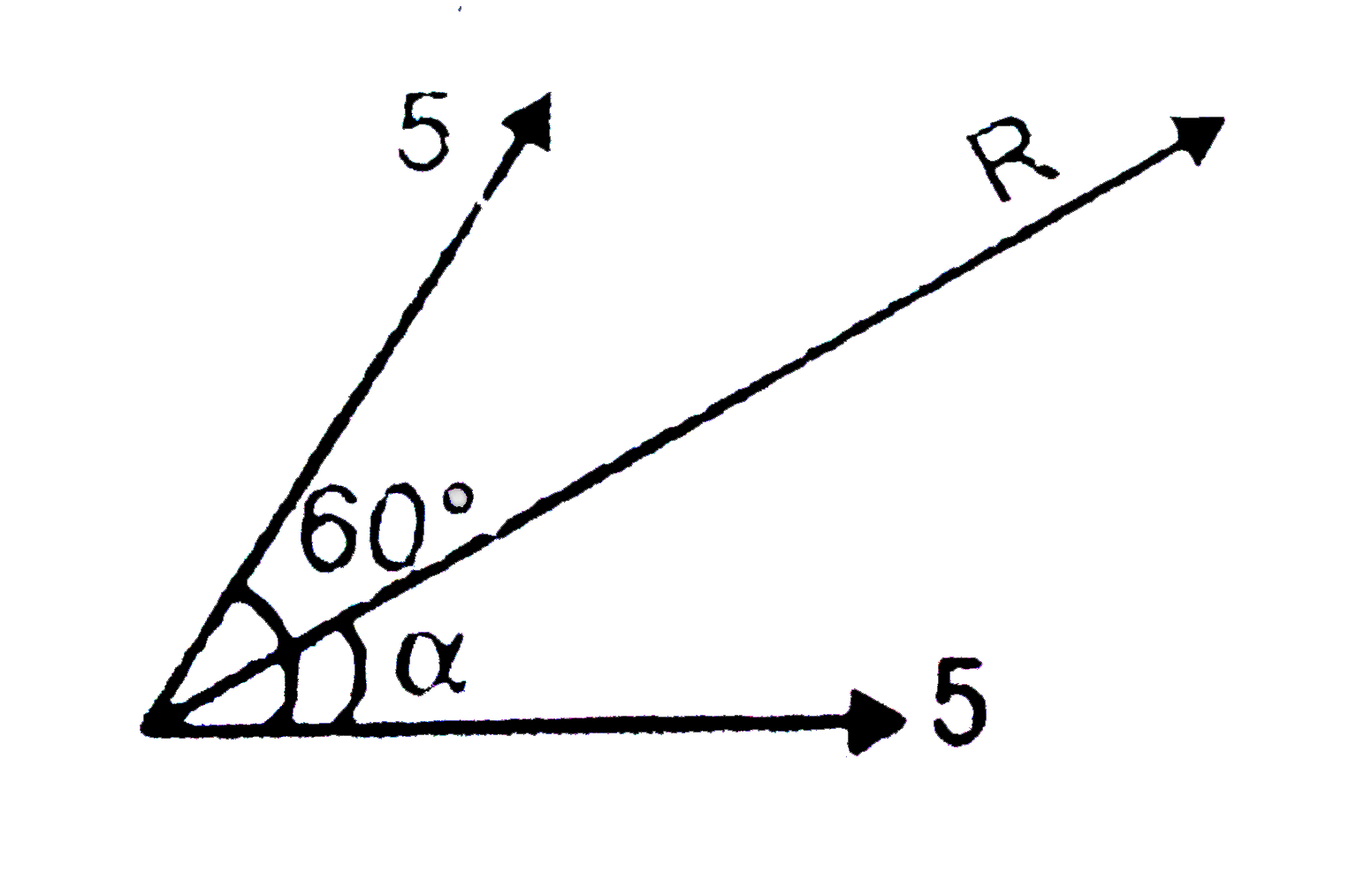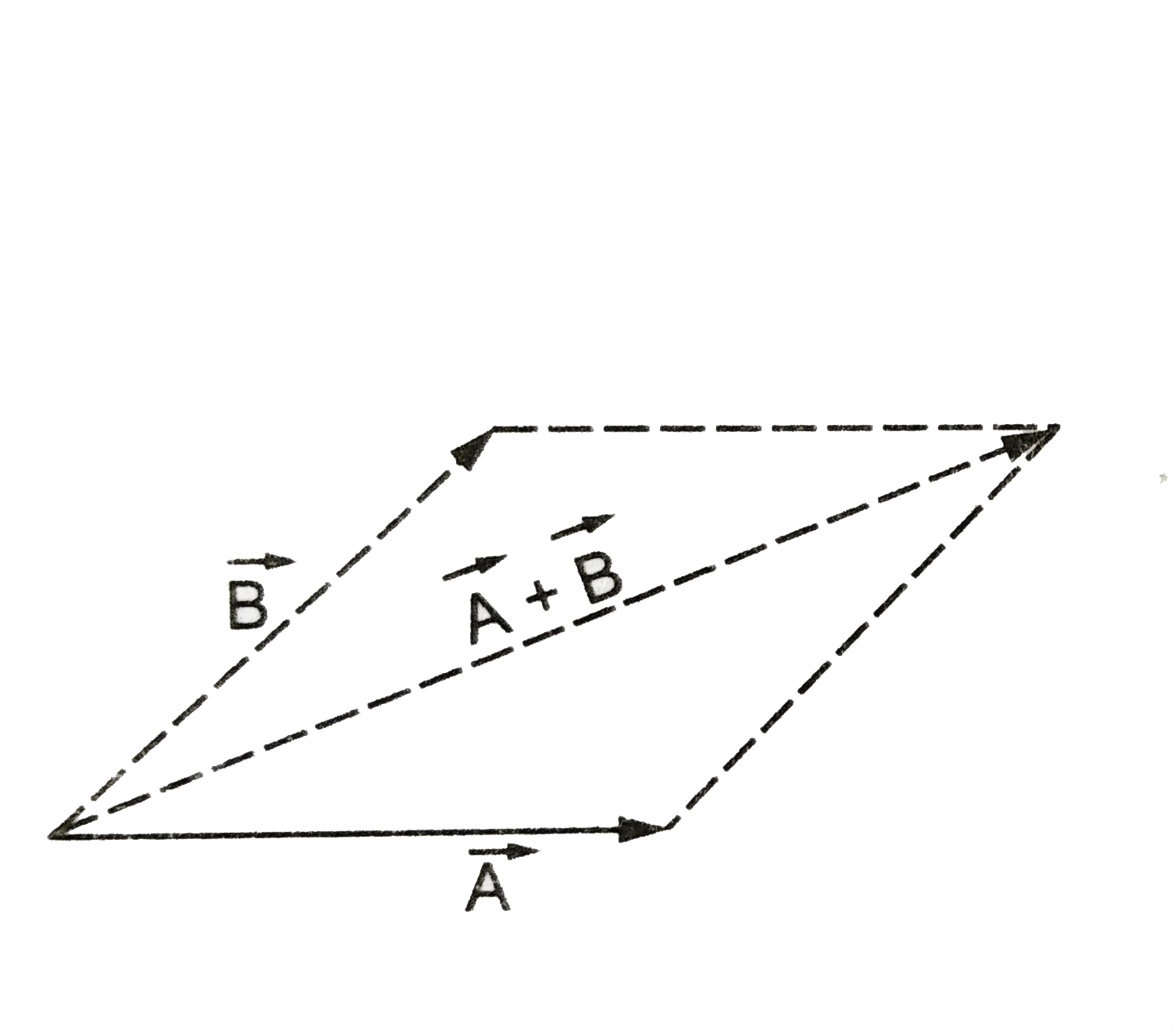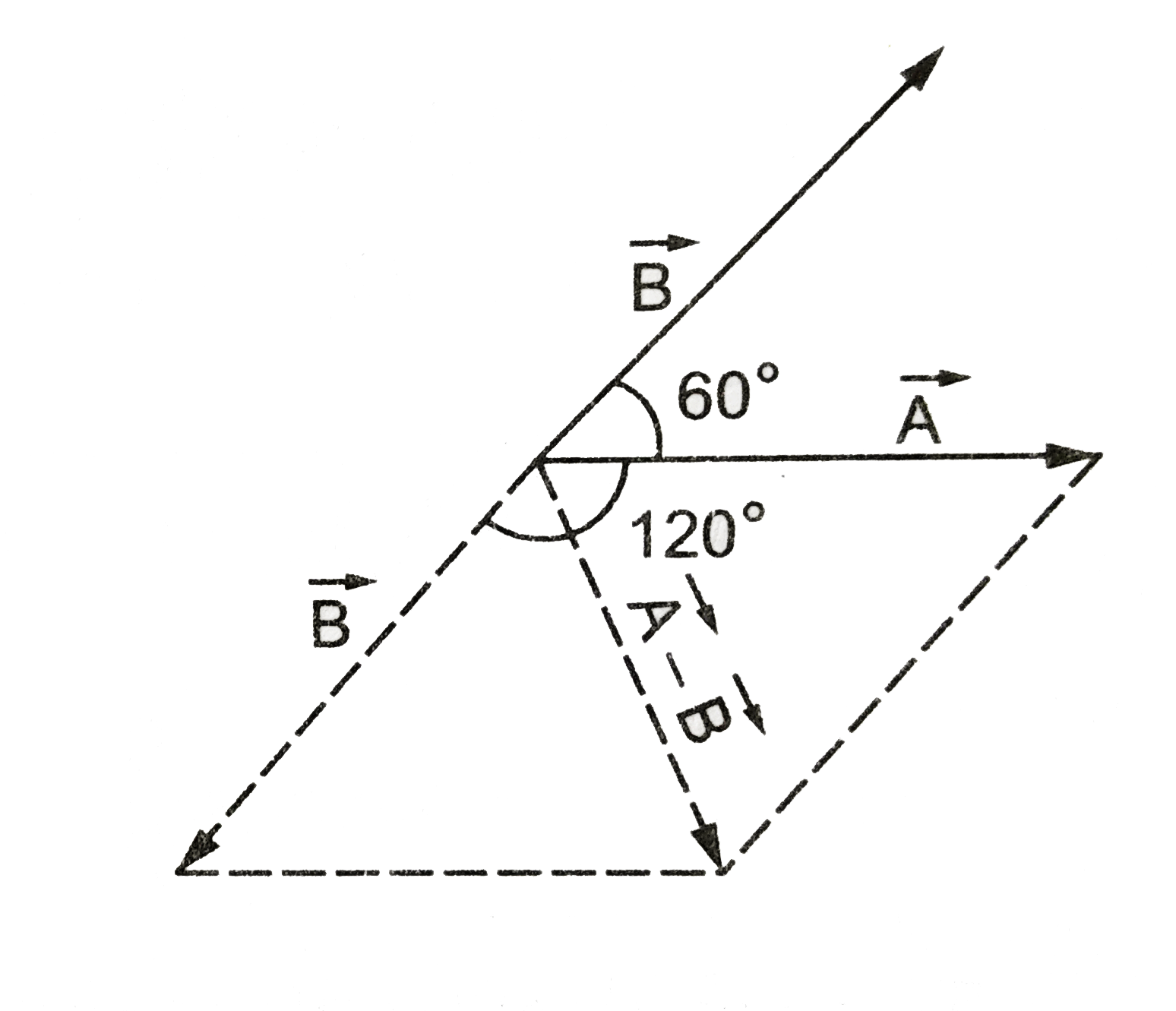Two vectors having equal magnitudes A make an angle θ with eahc other. Find the magnitude and direction of the resultant.
To find the magnitude and direction of the resultant of two vectors having equal magnitudes A that make an angle θ with each other, we can follow these steps:
Step 1: Understand the Vectors
We have two vectors, both with magnitude A, and they form an angle θ between them.
Step 2: Use the Formula for Resultant Magnitude
The magnitude of the resultant vector R of two vectors can be calculated using the formula:
R=√A2+A2+2A⋅A⋅cos(θ)
This simplifies to:
R=√2A2(1+cos(θ))
Step 3: Simplify the Expression
We can factor out 2A2:
R=√2A2(1+cos(θ))=A√2(1+cos(θ))
Step 4: Use the Cosine Double Angle Identity
We can use the identity 1+cos(θ)=2cos2(θ2):
R=A√2⋅2cos2(θ2)=A⋅2cos(θ2)
Thus, the magnitude of the resultant vector is:
R=2Acos(θ2)
Step 5: Find the Direction of the Resultant
To find the direction of the resultant vector, we can use the tangent formula for the angle α that the resultant makes with one of the vectors:
tan(α)=Asin(θ)A+Acos(θ)=sin(θ)1+cos(θ)
Step 6: Simplify the Tangent Expression
Using the identity 1+cos(θ)=2cos2(θ2) and sin(θ)=2sin(θ2)cos(θ2):
tan(α)=2sin(θ2)cos(θ2)2cos2(θ2)=tan(θ2)
Thus, we find that:
α=θ2
Final Result
The magnitude of the resultant vector is:
R=2Acos(θ2)
And the direction of the resultant vector is at an angle θ2 with respect to either of the original vectors.
We have two vectors, both with magnitude A, and they form an angle θ between them.
The magnitude of the resultant vector R of two vectors can be calculated using the formula:
R=√A2+A2+2A⋅A⋅cos(θ)
This simplifies to:
R=√2A2(1+cos(θ))
We can factor out 2A2:
R=√2A2(1+cos(θ))=A√2(1+cos(θ))
We can use the identity 1+cos(θ)=2cos2(θ2):
R=A√2⋅2cos2(θ2)=A⋅2cos(θ2)
Thus, the magnitude of the resultant vector is:
R=2Acos(θ2)
To find the direction of the resultant vector, we can use the tangent formula for the angle α that the resultant makes with one of the vectors:
tan(α)=Asin(θ)A+Acos(θ)=sin(θ)1+cos(θ)
Using the identity 1+cos(θ)=2cos2(θ2) and sin(θ)=2sin(θ2)cos(θ2):
tan(α)=2sin(θ2)cos(θ2)2cos2(θ2)=tan(θ2)
Thus, we find that:
α=θ2
The magnitude of the resultant vector is:
R=2Acos(θ2)
And the direction of the resultant vector is at an angle θ2 with respect to either of the original vectors.
Topper's Solved these Questions
- PHYSICS AND MATHEMATICSBook:HC VERMAChapter:PHYSICS AND MATHEMATICSExercise:Worked Out Examples
Explore 18 Videos
- PHYSICS AND MATHEMATICSBook:HC VERMAChapter:PHYSICS AND MATHEMATICSExercise:Short Answer
Explore 14 Videos
- NEWTON'S LAWS OF MOTIONBook:HC VERMAChapter:NEWTON'S LAWS OF MOTIONExercise:Exercises
Explore 42 Videos
- REST AND MOTION : KINEMATICSBook:HC VERMAChapter:REST AND MOTION : KINEMATICSExercise:Exercises
Explore 51 Videos
Similar Questions
Two vectors having equal magnitudes A make an angle θ with each other. Find the magnitude and direction of the resultant.
View SolutionTwo vectors having equal magnitude of 5 units, have an angle of 60∘ between them. Find the magnitude of their resultant vector and its angle from one of the vectors.

View Solution
Knowledge Check
Two forces of equal magnitude act at a point making an angle θ with each other. If the direction of one of the forces is reversed, the direction of the resultant will turn through
A30∘B45∘C60∘D90∘A vector of magnitude 30 and direction eastwards is added with another vector of magnitude 40 and direction Northwards . Find the magnitude and direction of resultant with the east.
A53,53∘ with EastB50,53∘ with WestC50,53∘ with EastD53,53∘ with WestTwo forces of equal magnitude F are at a point. If θ is the angle between two forces then magnitude of the resultant forces will be
A2Fcosθ2BFcosθ2C2FcosθDF2cosθ2
Two vectors of equal magnitude 5 unit have an angle 600 between them. Find the magnitude of a the sum of the vectors and b the difference of the vectors.
 .
.  .
.
View SolutionTwo vectors of 10 units & 5 units make an angle of 120∘ with each other.Find the magnitude & angle of resultant with vector of 10 unit magnitude.
View SolutionTwo vectors →a&→b have equal magnitudes of 10 m ,. Find the magnitude and direction of the resultant vector .
View SolutionTwo vectors of equal magnitude 2 are at an angle of 60∘ to each other find magnitude of thei. Sum & difference .
View SolutionTwo vectors having magnitude 12 and 13 are inclined at and angle45∘ to each other.find their resultant vector.
View Solution